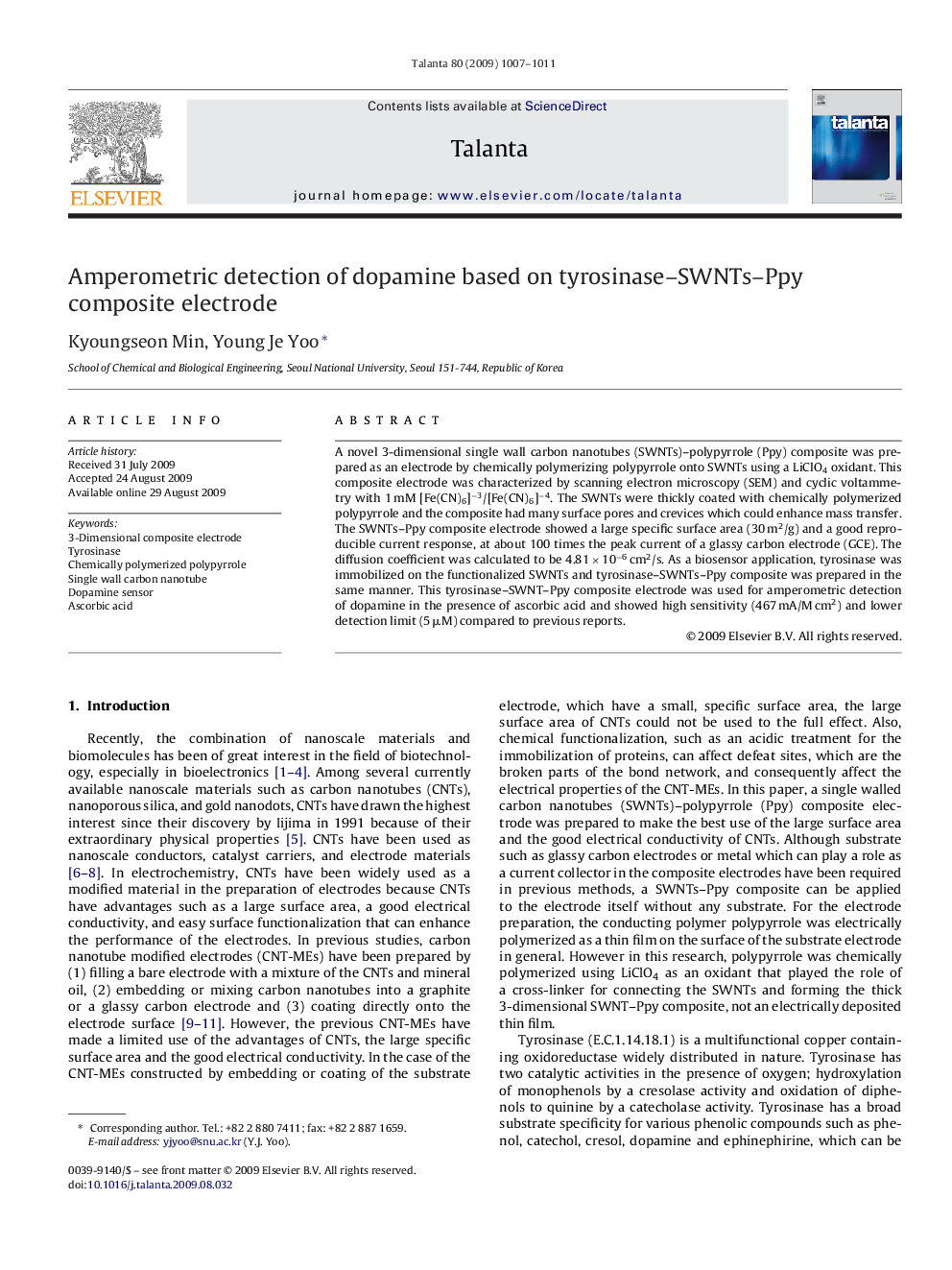| Article ID | Journal | Published Year | Pages | File Type |
|---|---|---|---|---|
| 1246796 | Talanta | 2009 | 5 Pages |
A novel 3-dimensional single wall carbon nanotubes (SWNTs)–polypyrrole (Ppy) composite was prepared as an electrode by chemically polymerizing polypyrrole onto SWNTs using a LiClO4 oxidant. This composite electrode was characterized by scanning electron microscopy (SEM) and cyclic voltammetry with 1 mM [Fe(CN)6]−3/[Fe(CN)6]−4. The SWNTs were thickly coated with chemically polymerized polypyrrole and the composite had many surface pores and crevices which could enhance mass transfer. The SWNTs–Ppy composite electrode showed a large specific surface area (30 m2/g) and a good reproducible current response, at about 100 times the peak current of a glassy carbon electrode (GCE). The diffusion coefficient was calculated to be 4.81 × 10−6 cm2/s. As a biosensor application, tyrosinase was immobilized on the functionalized SWNTs and tyrosinase–SWNTs–Ppy composite was prepared in the same manner. This tyrosinase–SWNT–Ppy composite electrode was used for amperometric detection of dopamine in the presence of ascorbic acid and showed high sensitivity (467 mA/M cm2) and lower detection limit (5 μM) compared to previous reports.
